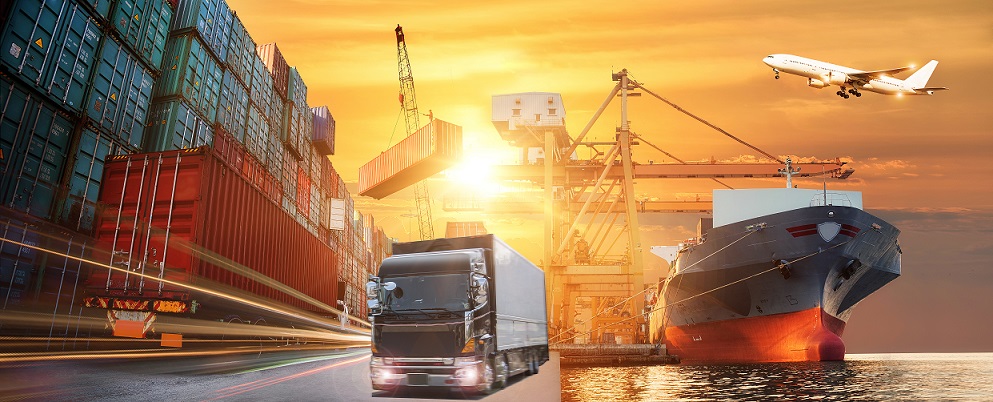Export to Norway
Excerpt from our service catalog in the area of export to Norway
- Optimization of customs processes
- Full-service support for sales to Norway
- Concept creation and support for projects in Norway
- Consulting regarding Incoterms
- Support for simplified registration through the VOEC platform
- Clarification of questions regarding "Særavgifter" (special taxes/fees)

Legal Foundations for Importing Goods to Norway
Norway is not part of the EU Customs Union. Therefore, there is a customs border for imports to Norway. However, with the European Economic Area (EEA) Agreement, Norway is integrated into the EU Single Market, allowing (largely) free movement of goods, services, people, and capital. The EEA Agreement provides for a high degree of trade liberalization in most sectors. However, agriculture and fisheries are not covered by the EEA Agreement.
Additionally, it should be noted that Norway is not part of the EU's common VAT system.
When importing goods from abroad to Norway, the following may be incurred:
- "Toll" (customs duties)
- "Innførselmerverdiavgift" (import VAT)
- "Særavgifter" (special taxes/fees)
Overview of Key Internal Legal Foundations Relevant to Importing Goods to Norway:
- Movement of Goods Act and associated regulations
- Customs Duty Act and associated regulations
- Merverdiavgiftsloven (VAT Act) and associated regulations
Customs for Importing Goods to Norway
Under Norwegian customs law, most goods currently have a customs rate of 0 %, meaning no customs duties are levied on them.
The Norwegian Customs Authority offers an online service to determine the current customs rate for the relevant goods. This service also provides the applicable rate for import VAT and information on any "Særavgifter" (special taxes/fees).
Currently, customs duties are mainly imposed on food and textiles when importing goods to Norway. In individual cases, it can be checked whether a customs preference applies, for example, due to an agreement under the EEA or EEA Agreement.
For temporary importation of goods, an exemption from customs duties and other import charges may apply: Norwegian Customs provides information about this. In the temporary importation customs procedure ("midlertidig import"), a distinction is made between cases where security is provided and cases where security is not required. Doubts can be clarified with Norwegian Customs or tax authorities.
"Særavgifter" (Special Taxes/Fees) for Importing Goods to Norway
"Særavgifter" refers to a series of special taxes/fees imposed on the import, production, or sale of certain types of goods.
In this sense, "Særavgifter" may apply to the importation of the following goods (partial list):
- Vehicles (Engangsavgift)
- Alcoholic beverages
- Tobacco
- Sugar
- Mineral oil products
The Norwegian tax authorities provide an overview of these "Særavgifter" on their website.
Detailed explanations of the individual taxes/fees are published annually in circulars.
Import VAT for Goods Entering Norway
The import VAT is based on customs law regulations but primarily follows VAT rules. The basic principle is that import VAT is calculated when goods are imported. In general, import VAT will be assessed when goods are imported to Norway, unless there is an exemption. Specific goods (e.g., books) and certain customs procedures (e.g., for temporary imports) may be exempt. The Norwegian Customs authorities provide information on exemptions from Norwegian import VAT on their website. Exemption regulations can also be found in Chapter 7 of the Norwegian VAT Act.
The rate for import VAT is 25%, with reduced rates for certain goods (e.g., 15% for food). The Norwegian Customs provides an overview of these rates, and the applicable import VAT rate for a specific tariff number can be determined using their online service.
When it comes to how import VAT is levied, two different scenarios should be distinguished: If the importer is registered in the Norwegian VAT register at the time of import, import VAT is not immediately collected at the border. Instead, the importer will report the import VAT as part of their VAT return. On the other hand, if all conditions are met, the amount can be deducted as input VAT in the same VAT return, resulting in a liquidity benefit. However, if the importer is not yet registered in the Norwegian VAT register at the time of import, the import VAT must be paid immediately as a cash amount. The Norwegian Customs provide more information on this process on their website.
When it comes to determining who is liable for the import VAT, Norwegian VAT law refers to customs law: as a result, the declarant will generally be the person responsible for the import VAT. In the Norwegian import declaration (see below), the "Mottaker" (recipient) or the declarant should be indicated in section 8. The question of who is considered the declarant under customs law can be relatively freely chosen (see explanation from Norwegian customs authorities). However, it is important to exercise extreme caution here, as import VAT can only be deducted as input tax in the VAT return under certain conditions.
In B2B transactions (i.e., business-to-business), the import concept can often be structured in a way that allows the import VAT to be deducted in the VAT return, thus not appearing as a cost factor. However, each case must be reviewed to ensure all criteria are met and a coherent overall concept is in place. In this context, the Norwegian tax authorities have published an explanatory letter. As stated therein, an important point is that the delivery terms and the associated transfer of ownership (time and place) should be structured such that the recipient of the goods (according to the customs declaration) is the legal owner at the time of import. Under the heading "The importer is not the actual owner of the goods" ("Varemottaker er ikke reell vareeier"), it is explained that the importer ("Mottaker") must generally be the actual owner of the goods at the time of import for the recipient (according to the customs declaration) to be entitled to deduct the import VAT. In this regard, the purchase terms (especially Incoterms) should be aligned accordingly. The tax authority provides examples where the importer (according to the customs declaration) is not the actual owner:
- Company A imports goods for Company B within a corporate group.
- Under a rental agreement, tenant A imports rented goods from landlord B (based abroad) into Norway.
According to the tax authority, in these cases, the importer of the goods is generally not entitled to claim the deduction for Norwegian import VAT. Some voices in professional literature have suggested a less stringent interpretation of the requirement for legal ownership at the time of crossing the border.
The Norwegian tax authorities explain on the following website how the Norwegian import VAT is calculated and should be reported in the VAT return.
Tip: In our article for the journal RIW, the issue of the right to deduct import VAT is discussed in more detail. You can download the article here (in German).
The Norwegian Import Declaration
Once the optimal customs and VAT strategy is developed, the Norwegian import declaration can be processed. Norwegian Customs provides information on the specific sections of the form on their website.
Normal VAT Registration in Norway
When exporting goods, the question often arises whether a company needs to register for VAT in Norway. This question must primarily be clarified from a Norwegian perspective, as Norway is not part of the EU's common VAT system.
For example, the following transactions by foreign companies can become subject to VAT in Norway:
- Incoterms DDP deliveries
- Goods deliveries to Norway, which in a total assessment are considered to have been made in Norway (see explanation below)
- Supply & Install projects (see explanation below)
Deliveries of goods to Norway may also become subject to VAT, even if the supplier does not deliver the goods under Incoterms DDP (and thereby acts as the importer) but instead agrees to a delivery term where the Norwegian customer assumes responsibility for import duties, e.g., a DAP delivery with a location in Norway. The key case here is the Ifi OY judgment (HR-2006-536) by the Supreme Court. According to this ruling, a case-specific overall assessment should be made to determine whether the deliveries have taken place from a VAT perspective in Norway.
"Supply & Install" projects refer to the delivery of equipment that is associated with installation on-site in Norway. In these cases, the ownership of the equipment typically passes either gradually during the installation or upon completion of the installation to the buyer. In such cases, the foreign seller must generally register for VAT in Norway for the delivery of their goods and services (the turnover is usually subject to VAT in Norway). These cases are typically delivered under the Incoterms DDP delivery term, meaning that the seller or supplier is responsible for the import and thus the Norwegian import VAT. In these cases, the seller (and importer of the goods) can usually deduct the import VAT as input tax.
If the delivery is subject to VAT in Norway, the company must first register in the Norwegian company register and, in the second step, in the Norwegian VAT register.
Tip: In our article for the journal RIW, the cases that lead to VAT registration in Norway are explained in more detail. You can download the article here (in German).
Online Shops: Simplified Registration via VOEC
VOEC (VAT on E-Commerce) is a simplified VAT registration system that allows foreign online retailers to fulfill their import and VAT obligations in Norway. The VOEC system is an alternative to regular Norwegian VAT registration. It applies exclusively to sales to private customers, i.e., "B2C." Foreign companies must register for VAT in Norway if their 12-month turnover exceeds NOK 50,000. The VOEC system applies to goods with a value up to NOK 3,000 (including freight and insurance), and it includes most types of goods, excluding items like food, tobacco, and alcoholic beverages. The VOEC goods are subject to a simplified customs procedure without customs declaration. No excise taxes or customs duties are imposed on goods under the VOEC system. The VAT rate follows general regulations (standard VAT rate: 25%). The VOEC system is a simplified "pay-only" system. VOEC suppliers are not entitled to input tax deduction. The Norwegian tax authorities provide information on the VOEC system on the following page.
Before registering in the VOEC register, it is advisable to check whether the (simplified) VOEC registration is applicable or whether the company should rather be "normally" VAT registered. According to the Norwegian tax administration, it may be the case that a VOEC registration is not appropriate if the foreign company is significantly targeting the Norwegian market.
Tip: In our contribution to the magazine RIW 6/2023 "VAT Procedures in Online Trade," the topic of VOEC is discussed in more detail. You can download the article here (in German).
Current legal developments: Particularly online retailers active in the clothing sector should pay attention to current legal developments. The background is the "Boozt" case—Norwegian public broadcaster NRK reports on this. As a result, it is expected that the VOEC system will undergo changes in the near future.
VAT in Norway
The topic is further explained on our website, VAT in Norway.





